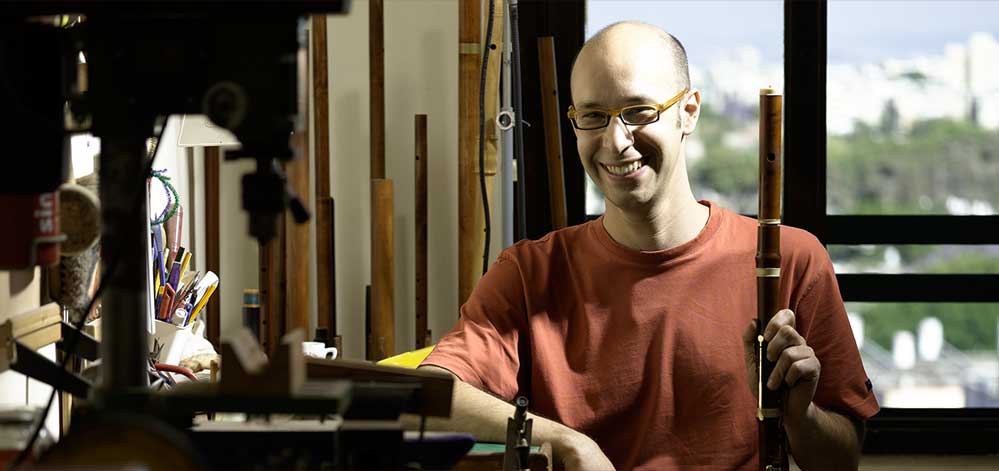I studied traverso at the Royal Conservatory, The Hague, with Wilbert Hazelzet. I began making flutes in 1994, after a one year apprenticeship with Peter van der Poel. In the years 1995-1998 I worked at the Gemeente Museum in The Hague, where I compiled a catalogue of the Baroque flutes in the collection, and undertook conservation work on various woodwinds. This was a wonderful opportunity to be in close contact with a relatively large collection of very interesting instruments and enabled me to appreciate the old makers' wonderful work at close hand. The first copies I made were of flutes found in this collection.
Apart from being a maker I also play traverso professionally as a member of several ensembles, performing music from the sixteenth to the nineteenth centuries on period instruments. This gives me first-hand experience with the instruments I make and enables me to experiment with the artistic qualities of the new models I make in a musical context.
One of the groups with which I work,
The Modena Consort, is a renaissance traverso consort performing the repertoire of late fifteenth and sixteenth-century music. The group is composed of four flute players, including myself. This ensemble was and continues to be a helpful source for experimenting with the music and the instruments.
I have always been interested in the history of the flute and have been doing research about the instrument and its music for many years. Have a look at my
publications page for some of the articles I published, as well as the
blog section for the latest news from the workshop.
I have been living and working in Montréal, Québec (Canada) since 2009. I love the city’s vibrant atmosphere, and unique combination of European and North American cultures. I travel regularly to Europe and the US regularly for
exhibitions, concerts and conferences.


